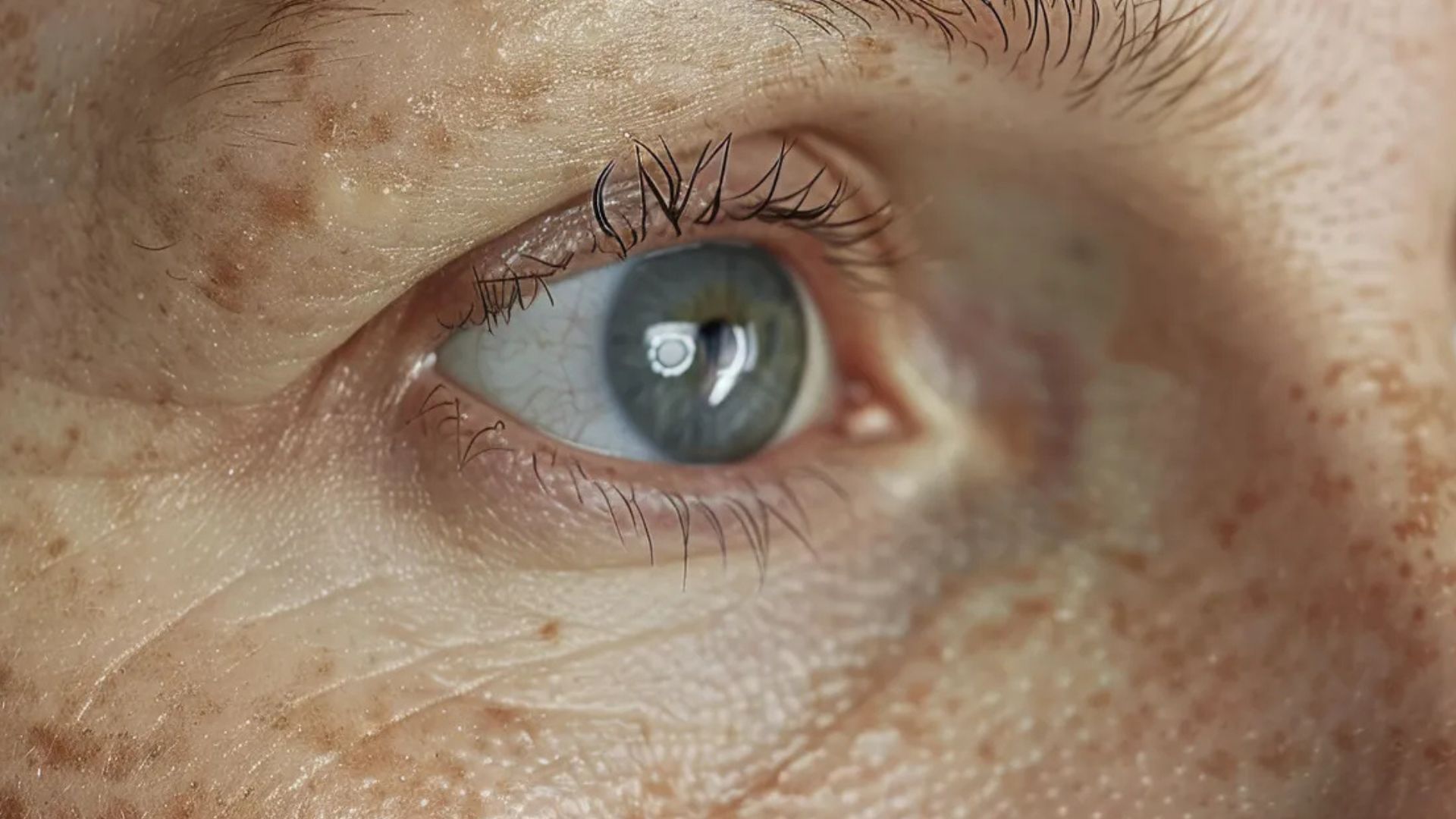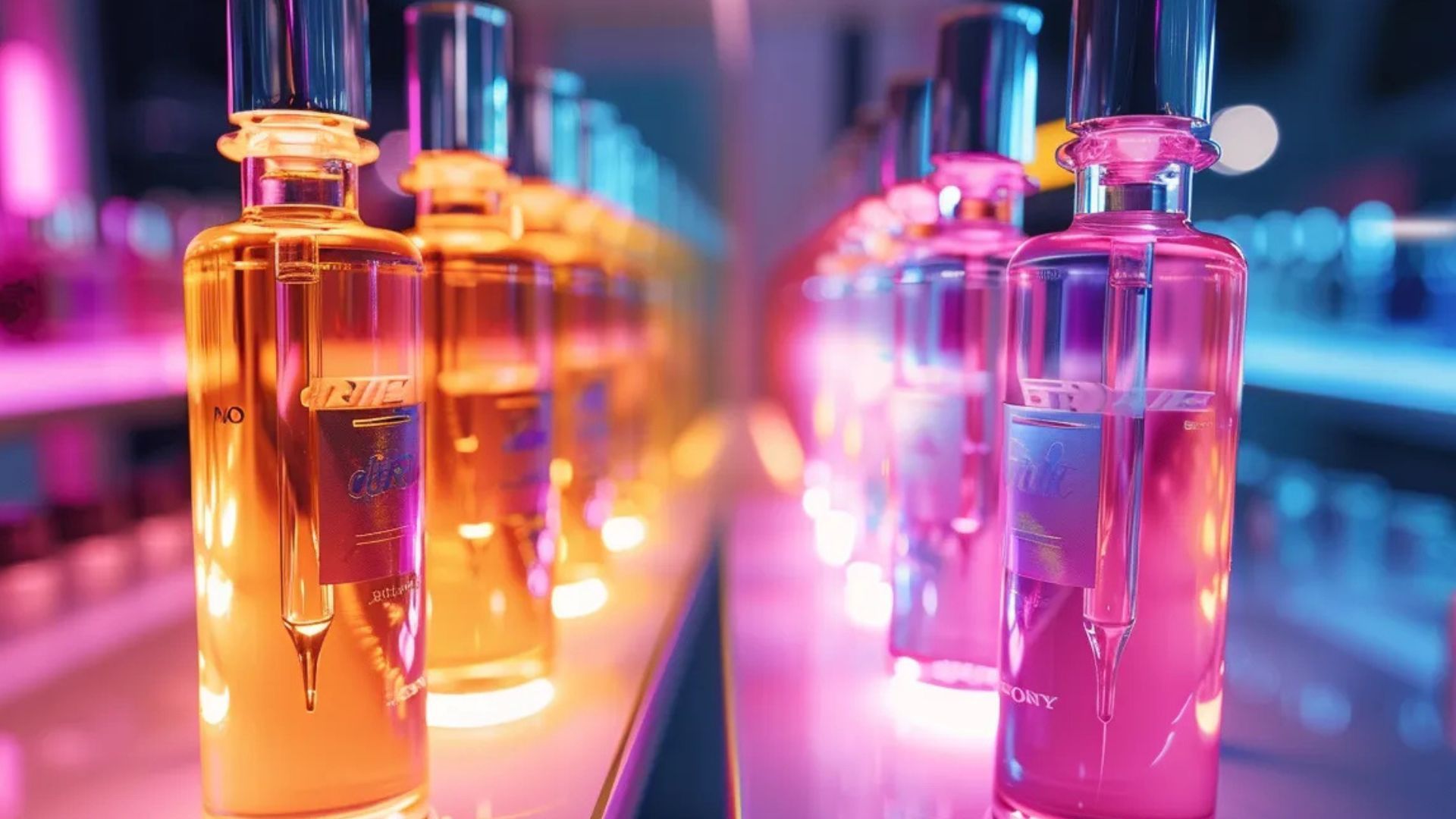Microneedling vs. Chemical Peels - Which One Gives Better Results

Assessing Microneedling vs. Chemical Peels for Your Skin Goals
Choosing the right skin treatment can be challenging, especially when deciding between microneedling and chemical peels. Each option offers unique benefits, including enhanced healing and improved skin texture with a microneedling device or the renewal effects of glycolic acid found in chemical peels. This article will explore the advantages of both treatments, compare costs, and discuss aftercare practices. Readers will gain clarity on which approach aligns with their skin goals, addressing common concerns like stubborn fat and uneven texture to achieve desired results.
Key Takeaways
• Microneedling effectively improves skin texture by stimulating collagen and elastin production
• Proper aftercare is crucial for maximizing microneedling and chemical peel results
• Consulting a licensed professional ensures personalized treatment plans that address specific skin concerns
• The recovery time for microneedling is minimal, while chemical peels may require more downtime
• Understanding skin goals aids in selecting the most suitable treatment between microneedling and chemical peels
Understand Microneedling Benefits for Improved Skin Texture

Microneedling offers numerous advantages for improving skin texture through a series of focused techniques. By stimulating collagen production, this cosmetic treatment promotes skin rejuvenation, effectively addressing concerns such as acne scars and fine lines. It’s essential to assess potential side effects, identify ideal skin types, and follow Bel Viso Medical Spa aftercare tips to ensure the best results. Each of these elements plays a critical role in achieving healthy aesthetics with microneedling.
Evaluate How Microneedling Stimulates Collagen Production
Microneedling, which utilizes fine needles to create micro-injuries in the skin, significantly enhances collagen production, promoting a youthful appearance. The efficacy of this treatment lies in its ability to trigger the body's natural healing processes, leading to smoother skin texture and reduced visibility of scars and fine lines. Unlike chemical peels, which often involve trichloroacetic acid to exfoliate and rejuvenate the skin, microneedling encourages deeper rejuvenation at a cellular level without aggressive removal of the skin's surface, making it a gentle alternative:
• Microneedling stimulates skin healing by leveraging the body's response to micro-injuries.
• The needles create controlled damage, prompting the production of collagen and elastin.
• This technique is particularly effective for addressing acne scars and fine lines.
• Microneedling is a favorable option for those seeking improvement in skin texture without intense chemical intervention.
Learn About Skin Rejuvenation Through Microneedling Techniques
Microneedling is recognized as a highly effective method for skin rejuvenation, bridging the gap between traditional cosmetic treatments and advanced dermatological techniques. This minimally invasive procedure promotes the natural healing of human skin through a series of micro-injuries, which stimulates collagen and elastin production. Research indicates that regular microneedling sessions can lead to significant improvements in overall skin texture and tone, addressing issues like acne scars with minimal risk of side effects, such as skin cancer, when performed by qualified professionals. This blend of safety and efficacy makes microneedling an appealing option for those seeking aesthetic enhancement without extensive downtime.
• Microneedling employs fine needles to create micro-injuries in the skin.
• This procedure triggers collagen production, leading to smoother skin texture.
• It is particularly effective for treating acne scars and fine lines.
• Research supports its safety and efficiency as a cosmetic treatment.
Assess Microneedling Effectiveness for Acne Scars and Fine Lines
Microneedling has proven effective for minimizing acne scars and reducing fine lines, largely due to its ability to stimulate collagen production without significant irritation. The procedure enhances skin texture and engages the immune system, promoting healing and rejuvenation. While topical medications, such as those containing citric acid, can complement this treatment, microneedling typically provides more profound results for individuals seeking a facial solution.
| Aspect | Microneedling | Chemical Peels |
|---|---|---|
| Purpose | Stimulates collagen and reduces scars | Exfoliates skin and improves tone |
| Irritation Level | Low | Moderate to High |
| Recovery Time | Minimal | Variable |
| Topical Medicine Usage | Complementary | Often necessary post-treatment |
| Citric Acid | Not applicable | Common ingredient |
Explore Potential Side Effects of Microneedling Procedures
While microneedling is a generally safe procedure, it is essential to be aware of potential side effects. Commonly reported issues include mild redness, swelling, and the possibility of bruising on the treated areas, such as the chin. In rare cases, individuals with skin conditions like psoriatic arthritis or those who have undergone treatments like microblading may experience increased sensitivity or irritation, emphasizing the necessity of a thorough consultation before the procedure:
• Mild redness and swelling can occur as part of the healing process.
• Bruising may appear on treated areas, including the chin.
• Individuals with pre-existing skin conditions should seek professional advice.
• Potential irritation can arise, especially for those with sensitive skin.
Identify Ideal Skin Types for Microneedling Treatments
Microneedling is particularly suitable for individuals with skin concerns such as uneven pigment, fine lines, or acne scars, as it stimulates collagen production effectively. However, it may not be appropriate for pregnant individuals or those with conditions that lead to excessive bleeding, given the procedure's creation of micro-injuries in the skin. For optimal results, consulting with a licensed professional familiar with therapies like microneedling is advisable, especially to address specific skin types and concerns identified in reputable sources like PubMed.
Discover Aftercare Tips for Microneedling Success
Proper aftercare is essential for maximizing the benefits of microneedling, particularly for individuals with skin concerns such as stretch marks or fine lines. After the procedure, it is advisable to avoid makeup, especially permanent makeup, for at least 24 hours to allow the skin to heal. Incorporating vitamin C into the skincare routine can further enhance collagen and elastin production, supporting the skin’s rejuvenation process. Consultation with an APRN can provide personalized recommendations for post-treatment care, ensuring optimal results and a smoother recovery.

Uncover Chemical Peel Advantages for Skin Renewal
Different types of chemical peels offer unique benefits for skin renewal, particularly in addressing wrinkles, discoloration, and sun damage. This section will explore the effects of various chemical peels, recovery times, and necessary safety precautions. It will also identify ideal skin types for these treatments and provide essential tips for maintaining post-peel luminosity through the application of vitamin-enriched products and emollients to enhance skin elasticity and cellular regeneration.
Compare Different Types of Chemical Peels and Their Effects
Different types of chemical peels offer varied effects based on their formulation and depth of penetration. Superficial peels target the outer layer of skin, helping to address issues like mild discoloration and dryness, while medium and deep peels penetrate further, effectively reducing deeper wrinkles and sun damage. Individuals considering treatments must be aware that certain peels may lead to temporary discomfort, like itchiness or redness, as the skin heals, and it's essential to discuss these effects and any concerns related to blood or healing before undergoing any procedure.
Examine Chemical Peels for Discoloration and Sun Damage
Chemical peels have shown effectiveness in minimizing discoloration and addressing sun damage, helping clients achieve clearer and more even skin tones. Board-certified dermatologists often recommend these treatments for individuals in New York City seeking to rejuvenate their skin with minimal downtime. By selecting the right type of chemical peel, clients can experience significant improvement in issues like age spots and pigmentation irregularities, thereby enhancing overall skin aesthetics:
| Peel Type | Depth of Penetration | Effectiveness for Discoloration | Downtime |
|---|---|---|---|
| Superficial Peel | Outer layer | Mild discoloration | Minimal |
| Medium Peel | Middle layer | Moderate discoloration | 1-2 weeks |
| Deep Peel | Deeper layers | Severe discoloration | 2-3 weeks |
Review the Recovery Time Associated With Chemical Peels
The recovery time associated with chemical peels varies depending on the type of peel performed and the individual's skin health. Superficial peels typically require minimal downtime, often allowing individuals to resume normal activities within a few hours. In contrast, medium and deep peels can entail recovery periods of one to three weeks, during which the skin may exhibit signs of redness, peeling, and sensitivity, particularly on the face and neck. Understanding these recovery timelines is essential for those considering options like Morpheus8 or other dermatology treatments aimed at achieving optimal skin goals.
Investigate Safety Precautions Before Undergoing a Chemical Peel
Safety precautions are critical before undergoing a chemical peel, especially for individuals with specific skin types or conditions, such as dark skin or alopecia areata. A consultation with a licensed professional is vital to assess skin concerns, as they can recommend appropriate treatments and determine if a local anesthetic is necessary to enhance comfort during the procedure. For those with vellus hair, careful consideration is required, as the chemical solutions may impact the hair follicles and surrounding skin, making it essential to discuss potential effects on the results and recovery process before proceeding.
Identify Skin Types That Respond Well to Chemical Peels
Certain skin types are particularly responsive to chemical peels, especially those experiencing issues such as hyperpigmentation and sun damage. Individuals with darker skin tones may benefit from treatments that include hydroquinone to effectively address discoloration without risking complications from inflammation and healing. Additionally, those with a history of sensitive skin should discuss options that may require sedation or can manage any associated pain, ensuring comfort throughout the procedure.
Gather Tips for Maintaining Glowing Skin After Peels
To maintain glowing skin after chemical peels, individuals should incorporate a quality lotion into their skincare routine to keep the skin hydrated and promote healing. Products rich in nourishing ingredients, such as those containing diamond powder, can enhance the skin’s luminosity and texture. Additionally, avoiding harsh chemicals and injections for a while ensures that the skin remains healthy and does not experience adverse reactions, preventing issues like atrophy or discoloration.
Consistency in aftercare is crucial for achieving optimal results. Following a routine that includes gentle cleansing and moisturizing can support skin renewal effectively:
| Step | Action | Benefits |
|---|---|---|
| 1 | Use a gentle cleanser | Removes impurities without irritation |
| 2 | Apply a hydrating lotion | Retains moisture and promotes healing |
| 3 | Incorporate diamond-infused products | Enhances glow and improves texture |
| 4 | Avoid excessive sun exposure | Prevents further skin damage |
Compare Treatment Costs of Microneedling and Chemical Peels

The evaluation of treatment costs for microneedling and chemical peels involves analyzing the pricing structure for microneedling sessions, as well as the costs associated with various chemical peel options. This section will also consider the long-term value of microneedling compared to chemical peels, explore insurance coverage for skin treatments, and gather information about potential financing options available for patients. Each of these aspects will provide practical insights into the financial implications of opting for these advanced skincare technologies.
Analyze the Pricing Structure for Microneedling Sessions
The pricing structure for microneedling sessions can vary significantly based on factors such as geographic location, treatment areas, and provider expertise. According to the American Academy of Dermatology, costs for these sessions often range from $100 to $700 per treatment, depending on the complexity of the procedure and the technology used. For individuals dealing with concerns like hyperpigmentation or seeking photorejuvenation, the long-term benefits of microneedling, including improved skin texture and tone, may justify the initial investment, especially considering its effectiveness for various skin types and conditions, including those related to type 2 diabetes.
Examine Costs Associated With Various Chemical Peel Options
The costs associated with various chemical peel options can differ significantly based on the depth of the peel and the specific ingredients used. Superficial peels tend to be less expensive, often ranging from $100 to $300, while medium and deep peels can range from $500 to $3,000, depending on the type of treatment and provider expertise in a day spa setting. This pricing structure reflects the varying degrees of effectiveness for skin renewal and the number of sessions needed, especially for individuals with concerns like hair loss or herpes, where deeper penetration may be required to promote skin cell health and recovery.
Consider Long-Term Value of Microneedling Versus Chemical Peels
When evaluating the long-term value of microneedling versus chemical peels, factors such as treatment frequency, cost-effectiveness, and desired results come into play. Microneedling, particularly when performed with a derma pen, may require fewer sessions over time compared to chemical peels like Jessner that often need multiple treatments to achieve sustained effects. Additionally, incorporating a quality moisturizer post-treatment can enhance the skin's recovery from both procedures, reinforcing their benefits and ensuring lasting improvements in skin texture and tone.
Investigate Insurance Coverage for Skin Treatments
When considering treatments like microneedling or chemical peels, understanding insurance coverage is crucial. Many medical insurance plans do not cover cosmetic procedures, focusing instead on treatments that address medical conditions. For advanced options such as the Beautybio Glo Facial or treatments involving acid solutions, clients should consult their insurance provider and a qualified nurse practitioner to explore any potential coverage for skin health improvements impacting the epidermis.
Gather Information on Potential Financing Options Available
Exploring financing options is a critical step for individuals considering microneedling or chemical peels. Many medical spas offer payment plans or promotional financing to help clients manage the costs associated with these treatments. For those who subscribe to a mailing list, exclusive deals and insights into the best microneedling pen options can be accessed, providing opportunities to save while investing in skin care. Understanding these financing resources can ease the financial burden, allowing clients to focus on their skin goals and overall well-being, including rest and using the right cream for post-treatment care.
Evaluate Results Timeline for Skin Treatments

Understanding the timeframe for results after microneedling and when to expect visible improvements from chemical peels is crucial for setting realistic skin goals. A comparison of the longevity of results from both methods will provide insight into which treatment aligns better with individual needs. Factors affecting treatment outcomes over time, such as skin type and medication, play an important role. Additionally, exploring ways to maximize results, including the use of sunscreen and consideration for conditions like rheumatoid arthritis, enhances overall skin health.
Understand the Timeframe for Results After Microneedling
The timeframe for noticing results after microneedling can vary among individuals, but many typically begin to see improvements in skin texture and tone within a few weeks. For those considering microneedling for hair loss, the timeline may differ, as it may take several sessions to notice significant effects. Understanding the safety of this procedure, particularly for those engaged in activities like indoor tanning or pursuing weight loss, is crucial, as proper aftercare can enhance outcomes and support overall hair care and skin health.
Assess When to Expect Visible Improvements From Chemical Peels
After undergoing a chemical peel, individuals can typically expect visible improvements in their skin within one to two weeks, depending on the depth of the peel chosen. Superficial peels may yield quicker results, helping to achieve a brighter complexion with minimal downtime, while medium and deep peels may require additional recovery to address potential bruising, burning, or blistering. By maintaining proper aftercare and consulting with a skilled provider, clients can optimize their path to healthy skin and ensure their aesthetic goals are met effectively.
Compare the Longevity of Results From Both Methods
Microneedling and chemical peels offer distinct timelines for the longevity of results, depending on individual skin responses and concerns. Microneedling generally provides lasting improvements in skin texture and tone, often yielding results that can endure for several months due to stimulated collagen production, particularly beneficial for those using isotretinoin or experiencing dermatitis. In contrast, chemical peels may require maintenance treatments to sustain improvements, with more immediate results typically observed after a single session but potentially fading within weeks without proper skincare regimens. Consulting with a qualified physician can help determine the best approach for individual skin goals, balancing factors like the use of transdermal therapies and radio frequency treatments to enhance outcomes.
Examine Factors Affecting Treatment Outcomes Over Time
Multiple factors can significantly influence the outcomes of skin treatments such as microneedling and chemical peels. Elements like a person's diet can affect skin health, with a balanced intake of nutrients supporting recovery and enhancing results. Additionally, proper exfoliation techniques at home, including home microneedling, can maintain gains achieved from professional treatments, ensuring long-lasting beauty.
| Factor | Impact on Treatment Outcome |
|---|---|
| Diet | A balanced diet supports skin health and recovery. |
| Exfoliation | Regular exfoliation helps maintain skin texture and enhances results. |
| Home Microneedling | Can complement professional treatments for sustained improvements. |
| Skin Type | Different skin types may react variably to treatments. |
Explore Ways to Maximize Results From Skin Treatments
To optimize results from skin treatments like microneedling and chemical peels, patients should focus on maintaining a healthy lifestyle that includes good nutrition and adequate hydration. Incorporating dietary elements rich in antioxidants can enhance skin recovery and rejuvenation, while adequate light exposure, especially during the healing period, may promote the synthesis of essential nutrients. Furthermore, individuals with skin diseases or conditions should consult licensed professionals before undergoing any cosmetic procedure, including TCA peeling 15, to ensure these treatments align with their unique skin goals and overall health status.
Identify Best Practices for Skin Care Post-Treatment

Effective skincare routines after treatments like microneedling and chemical peels are vital for optimal recovery. Learning essential post-care practices helps manage injury to the skin, while understanding how to apply tretinoin can enhance healing. Additionally, avoiding common mistakes, selecting the right skin products, and considering lifestyle factors are key to ensuring the best outcomes for skin health.
Learn Essential Skincare Routines After Microneedling
After microneedling, establishing an effective skincare routine is vital for optimal recovery and skin health. Incorporating hyaluronic acid into the regimen can help maintain hydration and plumpness, while growth factor serums promote healing and skin regeneration. Following the advice of a qualified doctor, patients should avoid exposure to heat and heavy makeup for at least 24 hours to minimize irritation and ensure the best outcomes, especially for those dealing with acne-related concerns.
Discover Post-Chemical Peel Care for Optimal Recovery
Post-chemical peel care is essential for promoting optimal recovery and achieving desired skin outcomes. It is advisable for individuals to avoid strenuous activities that may lead to excessive sweating or hyperhidrosis, as this can irritate healing skin. Additionally, using gentle cleansers and moisturizers without harsh ingredients is crucial, while maintaining hydration through antibiotic ointments can further support the skin's recovery process, especially if the mouth area was treated or if there was any surgery involved in facial procedures.
Assess How to Avoid Common Mistakes After Skin Treatments
To avoid common mistakes after skin treatments like skin pen microneedling or chemical peels, individuals should follow specific guidelines tailored to their skin type and treatment. First, using a gentle cleanser post-treatment is crucial to prevent irritation; those who have undergone these procedures should also steer clear of strong acids, such as lactic acid, for a few days to ensure the skin heals properly. Consulting with a qualified surgeon about the appropriate use of topical anesthetic and skincare products can further enhance recovery and support healthy skin, ultimately leading to better results.
| Post-Treatment Tip | Action | Benefit |
|---|---|---|
| Cleanser | Use a gentle cleanser | Prevents irritation |
| Acids | Avoid lactic acid | Supports healing |
| Consultation | Talk to a surgeon | Ensure proper care |
| Anesthetic | Follow topical anesthetic advice | Enhances comfort |
Gather Tips on Selecting Skin Products for Enhanced Healing
Choosing the right skin products post-treatment can significantly enhance healing and support the collagen induction therapy process initiated by procedures like microneedling or chemical peels. Products containing platelet-rich growth factors encourage skin repair, while those formulated with soothing ingredients can alleviate discomfort, especially for individuals with conditions such as rosacea. Additionally, selecting an analgesic cream for sensitive areas, such as the scalp, can help manage discomfort effectively, ensuring a smoother recovery and optimal skin results.
Understand the Impact of Lifestyle on Skin Recovery
Lifestyle choices significantly affect skin recovery after treatments like microneedling or chemical peels. Incorporating retinoids into skincare routines can enhance cellular turnover, promoting smoother and more youthful skin while minimizing inflammation. Additionally, protecting skin from sunburn through diligent sunblock use and exploring light therapy options fosters an optimal healing environment, supporting facial rejuvenation and ensuring lasting results from these cosmetic procedures.
Determine Your Ideal Skin Treatment Based on Goals

Clarifying personal skin goals is essential in selecting the right treatment between microneedling and chemical peels. Understanding how specific skin conditions, such as scars or tattoos, influence choices enables individuals to make informed decisions. Professionals provide tailored recommendations, emphasizing the significance of follow-up assessments for monitoring progress. Trying out consultations can further help in determining the most suitable approach that aligns with individual goals.
Clarify Personal Skin Goals to Choose the Right Treatment
Clarifying personal skin goals is essential when selecting between microneedling and chemical peels for optimal skin health. Individuals experiencing changes in complexion due to menopause or seeking to address concerns like fine lines around the eye can benefit from understanding their specific needs. Consulting a professional at Belviso Medical Spa for tailored advice allows clients to make informed decisions that align with their unique skin conditions, such as the use of treatments containing croton oil for more effective results.
| Skin Goal | Recommended Treatment | Key Benefits |
|---|---|---|
| Even Complexion | Chemical Peels | Reduces sun damage and discoloration |
| Minimize Fine Lines | Microneedling | Stimulates collagen production for smoother skin |
| Acne Scars | Microneedling | Improves texture and diminishes scarring |
| Wrinkles | Chemical Peels | Targets deeper wrinkles for enhanced appearance |
Analyze How Skin Conditions Influence Treatment Choice
When evaluating skin treatment options, specific skin conditions play a significant role in determining the best approach. For individuals with melasma, dermapen microneedling might be preferred for its ability to stimulate collagen and improve skin texture without harsh chemical effects. On the other hand, patients worried about pigmentation issues may benefit more from chemical peels, which effectively promote drug delivery of active ingredients for targeting discoloration. Additionally, understanding insurance coverage for these treatments can influence choices, as certain conditions might be covered under medical benefits, guiding clients toward effective skin care solutions tailored to their needs.
Gather Insights From Professionals on Personalized Recommendations
Consulting with licensed professionals is essential for anyone considering skin treatments such as microneedling or chemical peels, particularly for managing specific skin conditions like ageing, ulcerative colitis, or moisture retention challenges. These experts can provide personalized recommendations based on individual skin types and concerns, incorporating treatment options that may include phenol ingredients for deeper rejuvenation. Their insights can empower individuals to make informed decisions that effectively address their unique aesthetic goals, ultimately enhancing overall skin health.
| Skin Goal | Recommended Treatment | Key Benefits |
|---|---|---|
| Even Complexion | Chemical Peels | Reduces sun damage and discoloration |
| Minimize Fine Lines | Microneedling | Stimulates collagen production for smoother skin |
| Acne Scars | Microneedling | Improves texture and diminishes scarring |
| Wrinkles | Chemical Peels | Targets deeper wrinkles for enhanced appearance |
Evaluate the Importance of Follow-Up Assessments for Progress
Follow-up assessments play a vital role in evaluating the effectiveness of skin treatments like microneedling or chemical peels. During these sessions, licensed professionals can review progress, address any concerns related to oil production or potential allergies, and recommend adjustments to ensure optimal results. This ongoing evaluation is especially crucial for clients considering tattoo removal or those using additional treatments, such as Botox, as it helps create a comprehensive skin care plan tailored to individual needs.
Consider Trials or Consultations Before Making a Final Decision
Before deciding between microneedling and chemical peels, individuals should consider scheduling trials or consultations with licensed professionals specializing in aesthetic medicine. These sessions can provide expert insights into how each treatment addresses specific concerns, such as actinic keratosis or skin rejuvenation. Additionally, professionals can recommend appropriate products, like retinol, to enhance skin health post-treatment and ensure the chosen method aligns with the individual's unique tissue characteristics for optimal results.
Conclusion
Assessing microneedling versus chemical peels is crucial for achieving individual skin goals effectively. Understanding the unique benefits of each treatment allows individuals to make informed decisions tailored to their specific concerns, whether targeting fine lines, acne scars, or skin tone issues. Consulting with licensed professionals ensures a personalized approach, maximizing results while minimizing risks. Taking the time to evaluate these options empowers individuals to enhance their natural beauty and achieve desired aesthetic outcomes with confidence.
Our Recent News & Articles





